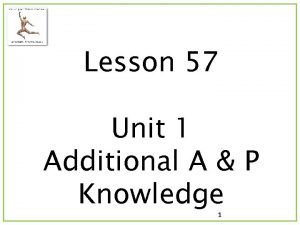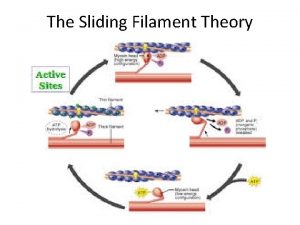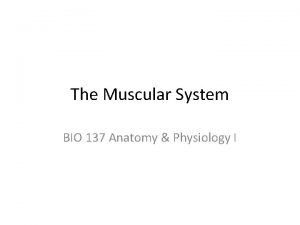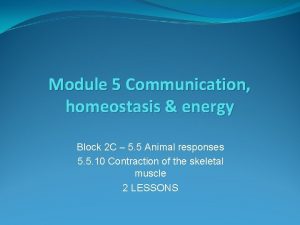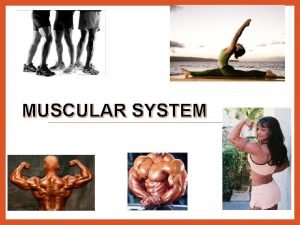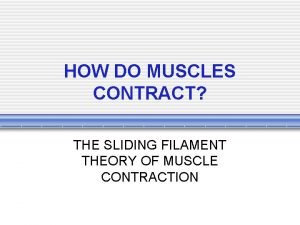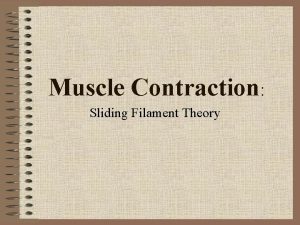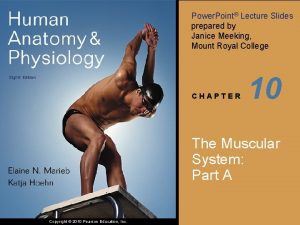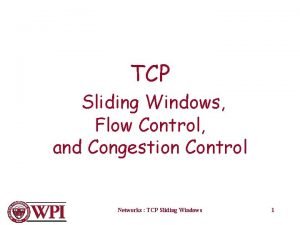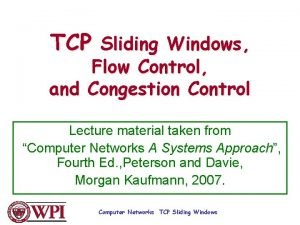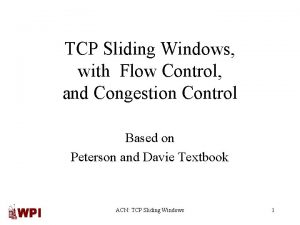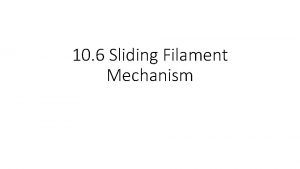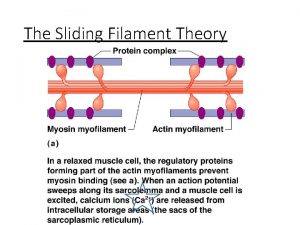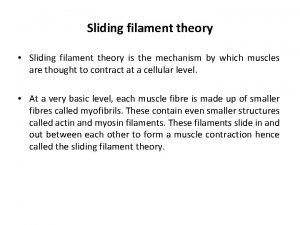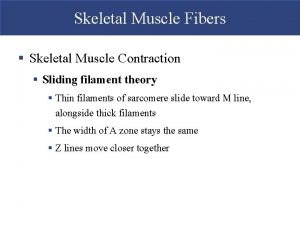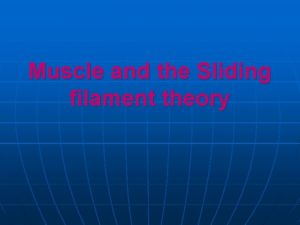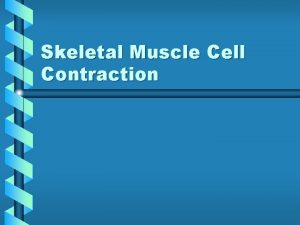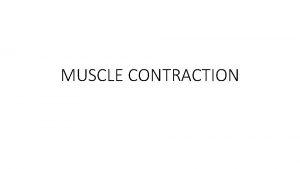Figure 39 4 Muscle Contractions Sliding Filament Mechanism













- Slides: 13

Figure 39 -4 Muscle Contractions

Sliding Filament Mechanism �_____ and_______filaments slide over each other_______the muscle length �Always requires ____ ions and ___

Actin � Double chain of ______ proteins � Makes up ____ filament � Attached to end walls of sarcomeres called _____ � Makes up __ band of sarcomere � Has ______ binding site which is blocked by ______ and ______ in relaxed muscle

Myosin � Makes up _______ filament � Has myosin ____ which bind to _______ � Make up ___ bands in a sarcomere


Neuromuscular Junction � “Joining” of motor ______ and ______ � ________-motor neurons release _________ that diffuse across synapse to receptors on muscle fiber membrane � Always _______ � Motor unit_______branched motor ____ synapsing with ______ muscle _______


11 Steps of a Muscle Contraction 1. 2. 3. 4. 5. An _________travels down a motor neuron The skeletal muscle _____ is activated at the __________ junction An ___________travels down the muscle _____________ The action potential enters _______ An action potential stimulates the __________________

11 Steps of a Muscle Contraction Cont. 6. ___________are released into the muscle cell __________ 7. _______ ions bind to _______ 8. __________ exposes ______ binding sites on _____ 9. Myosin _______ bind to ____ 10. Myosin heads _____ 11. _______ filaments are pulled toward sarcomere center, and muscle fiber ____

Muscle Relaxation �When action potential is over, ____ goes back to ________________ �Calcium is removed from _______ �Troponin and tropomyosin ____ myosin binding sites �Muscle ______

1 - Calcium released from sarcoplasmic reticulum 2 - Myosin head energized via myosin-ATPase activity which converts the bound ATP to ADP + Pi 3 - Calcium binds to troponin 4 - Tropomyosin translocates to uncover the cross-bridge binding sites 5 - The energized myosin binding sites approach the binding sites 6 - The first myosin head binds to actin 7 - The bound myosin head releases ADP + Pi, flips and the muscle shortens 8 - The second myosin head binds to actin 9 - The first myosin head binds ATP to allow the actin and myosin to unbind 10 - The second myosin head releases its ADP + Pi, flips & the muscle shortens further 11 - The second myosin head binds to ATP to allow the actin and myosin to unbind 12 - The second myosin head unbinds from the actin, flips back and is ready for the next cycle 13 - The cross-bridge cycle is terminated by the loss of calcium from the troponin 14 - Tropomyosin translocates to cover the cross-bridge binding sites 15 - The calcium returns to the sarcoplasmic reticulum, the muscle relaxes & returns to the resting state


Contraction Clip �http: //highered. mcgraw- hill. com/sites/0072495855/student_view 0/cha pter 10/animation__sarcomere_contraction. h tml http: //www. youtube. com/watch? v=Ed. Hz. KYDxr. Kc&feature =player_embedded http: //www. youtube. com/watch? v=g. J 309 Lf. H Q 3 M&feature=player_embedded
 Sliding filament
Sliding filament Sliding filament theory notes
Sliding filament theory notes Crash course sliding filament theory
Crash course sliding filament theory Sliding filament model
Sliding filament model Sliding filament theory
Sliding filament theory Sliding filament theory
Sliding filament theory Sliding filament theory
Sliding filament theory Bipennate muscle
Bipennate muscle Winding filament theory
Winding filament theory Flexor carpi ulnaris
Flexor carpi ulnaris Tcp sliding window mechanism
Tcp sliding window mechanism Sliding window tcp
Sliding window tcp Flow control windows
Flow control windows Smooth muscle fibres are fusiform and syncytial
Smooth muscle fibres are fusiform and syncytial
